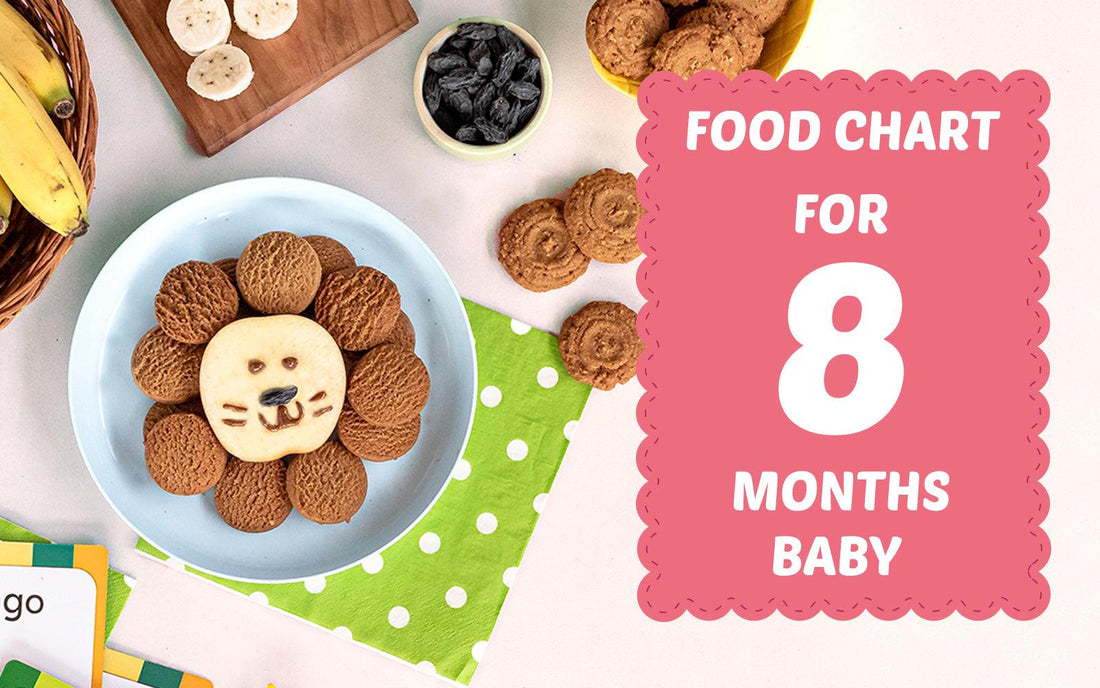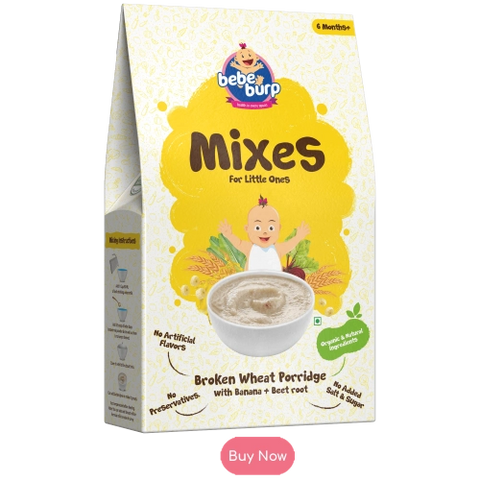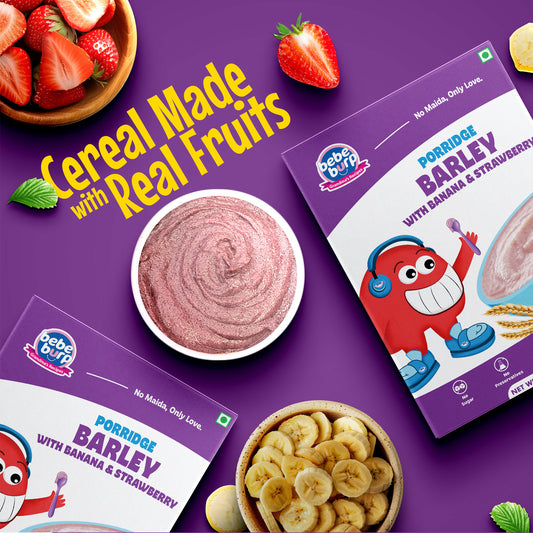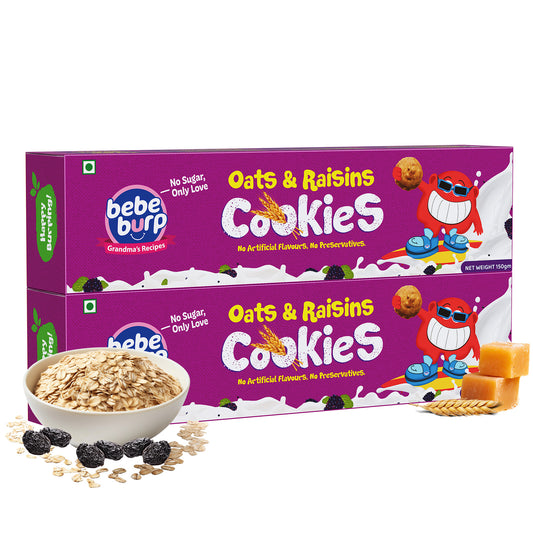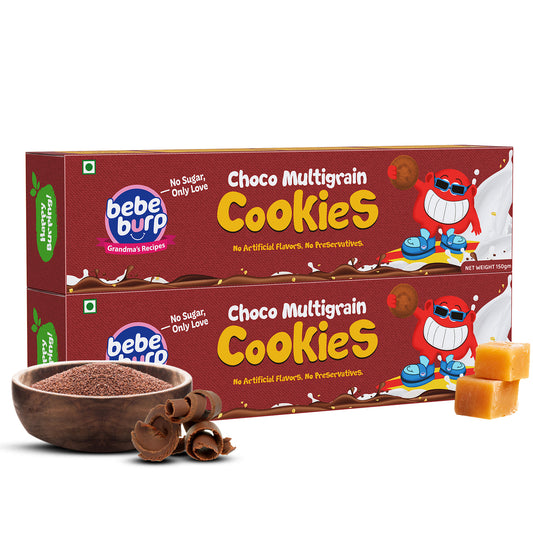- We need not reiterate the importance of a healthy diet in the overall development of your child. At the age of 8 months, your child is going through an exciting phase where he or she learns to crawl, make sounds, and feed themselves. All of their inquisitive activities require a lot of energy and warrant the need for a balanced diet plan.
You don’t need to lose your head just yet, we’re here with an 8 months baby food chart for indian diet. This article will provide you with a detailed 8 months baby food chart along with timelines that you can follow to keep your baby healthy.
How to introduce finger foods to your baby?
By the time your child turns 8 months old, they would’ve become comfortable with eating solid foods such as purees, porridges and soups. At this age, your child would’ve started showing interest in grabbing food at the table or grabbing the cutlery. You may add finger foods to your 8 months baby food plan once they show signs that they have a firm grip.
Introducing finger foods can be tricky and would need you to pay extra care to certain details. Pediatricians always recommend having a balanced blend of proteins, fats, and carbohydrates in an 8 monthsin 8 months baby food timetable. Here are a few tips you can follow for introducing finger foods:
- Cut and serve fresh fruits such as bananas, apples, mangoes, peaches, etc. depending on your child’s preferences.
- Serve small pieces of bread or bun that are soft and easy to chew.
- You can cut small potato or sweet potato wedges and bake them. Alternatively, you can roast them using minimal ghee.
- Boiled vegetables like carrots, peas, beans, etc. are a healthy and nutritious option to include in the meal plan.
- Consider introducing raw salad items such as cucumber, carrots, beetroot, and tomatoes.
- For a protein-packed meal, you can serve crumbled or small pieces of paneer or tofu.
8 months baby food chart for indian week 1
BM/F- Breast milk/ Formula

8 months baby food chart for indian week 2
BM/F- Breast milk/ Formula

8 months baby food chart for indian week 3
BM/F- Breast milk/ Formula

8 months baby food chart for indian week 4
BM/F- Breast milk/ Formula

List of vegetables and fruits you can feed your 8 months- 12 months baby
Fruits and vegetables are an excellent source of essential vitamins and minerals and form an important part of 8 month baby food. Adding them to your toddler’s 8 months baby food chart will help in maintaining your child’s health. You might wonder which one to serve your baby, and we have a list here to help you select the best ones.
Fruits
|
Apple |
Mango |
Banana |
Kiwi |
|
Papaya |
Avocado |
Peaches |
Watermelon |
|
Dates |
Grapes |
Chikoo |
Muskmelon |
Vegetables
|
Potato |
Carrot |
Pumpkin |
Sweet Potato |
|
Peas |
Cauliflower |
Broccoli |
Onion |
|
Tomato |
Cucumber |
Bottle Gourd |
Beans |
What are some healthy and weight gain foods for your baby?
The weight of the toddler is always a concern for parents. You must be generally caught between “Is my baby’s weight too much or too less?”. If your child appears too skinny or is below the ideal weight standard, you look for 8 month baby food that will help in weight gain. Some of the popular weight gain foods are avocado, oatmeals, peanut butter, eggs, and fish.
Now before we provide you with the list of foods and their recipes, you must know that when an infant is born, he/she can lose about 3-7% of their birth weight. Thus, this should not be a point of concern as it is normal, and your child will go back to normal in about 2 weeks.
Here’s a list of some healthy weight gain recipes for your 8-month-old that you can include in the 8 months baby food chart for indian diet.
Broken Wheat Mix Porridge
Directions For Preparation:
- In a pressure cooker, add 2 tablespoons of broken wheat.
- Take 2 dates and remove their seeds and add it to the pressure cooker. Also, add 3-4 soaked almonds after removing their skin.
- Close the lid of the pressure cooker and put it on medium flame. Cook for three whistles.
- In a separate pan, add 1/4th cup of water and 1 and a half teaspoons of jaggery powder.
- Boil this mixture till the jaggery powder melts completely. Turn off the flame and strain this mixture.
- When the ingredients are ready in the pressure cooker, allow it to cool and pour it in a blender. Now add the strained jaggery water to the blender.
- Blend the mixture until smooth.
- Pour the blended mixture into a saucepan. Depending on the age of your child, add either breast milk or ½ cup skimmed milk to the mixture.
- Keep the saucepan on low flame and keep whisking it.
- Boil the porridge till it becomes thick and turn off the flame.
- Allow the mixture to cool down and serve.
To avoid the hassle of cooking it on your own, you can try out Bebe Burp Broken Wheat Porridge Mix.
Choco Multigrain Cookies
Directions For Preparation:
- Take one cup of chocolate multigrain powder.
- Add ½ cup of dates powder to it. Alternatively, you can use jaggery powder.
- Mix the ingredients. Now add 1/4th cup of ghee to the mixture.
- Add a few drops of breastmilk and gather the dough together.
- Now make small portions of the prepared dough and press it in the middle to make a cookie shape.
- Prepare as many cookies as you can with the dough. You can choose to garnish it on top with a raisin or cashew on top of each cookie.
- Place these on a baking tray. Now, bake these cookies at 180-degree celsius for 15 minutes.
- Pull out the freshly baked cookies from the oven. Now you can serve your toddler.
Don’t have the time to cook these delicious cookies at home? Don’t worry we’ve got you covered! Explore our range of cookies which includes chocolate multigrain cookies and get your pack now!
Oats and Raisins Cookies
Directions For Preparation:
- In a bowl mix 1 cup rolled oats, 1 cup whole wheat flour, ½ tsp baking soda, 1 tsp cinnamon powder, ⅛ tsp salt, ⅓ cup jaggery powder, and ½ cup raisins. Mix all ingredients together.
- Take 1/4th cup of unsalted butter and heat it in a pan.
- Transfer the melted butter to a bowl. Add 1/3rd cup applesauce to it, and add one lightly beaten egg. If you want to avoid adding egg you can skip adding it.
- Now add 1 tsp vanilla extract to the butter applesauce mixture.
- Stir the ingredients together and add them to the dry mixture in the bowl.
- Make dough by gathering the ingredients together.
- Now press the dough on a cookie sheet placed on a baking tray in the shape of cookies.
- Bake the cookies in a preheated oven for 10-12 mins at 180 degrees.
- Once they’re golden brown, you can take them out and allow them to cool.
- Serve it once ready.
Alternatively, you can try out delicious Bebe Burp Oats and Raisins Cookies that are homemade and prepared using all organic ingredients.
Ragi Cookies
Directions For Preparation:
- Sieve ½ cup of ragi flour into a pan and roast it on a low flame.
- Now take ½ cup of wheat flour and sieve it in a bowl. Add the roasted ragi flour to the same bowl.
- Add ¼ tsp of baking powder to it, and mix the dry ingredients well.
- Now take ½ cup of unsalted butter and heat it. When it melts completely, add it to the dry ingredients bowl.
- Add ½ tsp of vanilla essence to the bowl.
- Now add 2 tbsp of maple syrup or jaggery syrup to the mixture and gather the ingredients together.
- You can add 2 tbsp of milk or water to knead the dough.
- On a baking tray, spread the butter paper and preheat the oven/microwave.
- Place small portions of dough on the tray. You can top it with a raisin or cashew.
- Bake the cookies for 12-15 mins at 180 degrees.
- Take them out and allow them to cool. Now you may serve the cookies to your toddler

Quinoa Arabic Herbs Puff
Want to treat your toddler with delicious puffs for snack time? We have the perfect snack for you! Get your hands on Bebe Burp Quinoa Arabic Herbs Puff.

Conclusion:
Planning the meals for your 8-month-old is not as difficult as it seems. The primary focus should be to curate a healthy 8 months baby food chart that has essential nutrients and will keep it interesting for your child. Our weekly meal plan will help solve most of your troubles and also help you experience the interesting phase of your child with ease.
FAQs:
- Can my 10-month-old have a cookie?
No, your 10-month-old baby cannot have a cookie if it contains sugars. When your child is below the age of 2 years, you should avoid serving any food item that has white sugar or sweeteners to your baby.
- Which porridge is best for weight gain for babies?
Ragi porridge is an excellent choice for babies as it helps in weight gain and also bone development. Banana oats porridge and dal khichdi are also other healthy and nutritious options that will help in weight gain.
- Can babies have porridge every day?
Yes, you can serve porridge to your baby every day. You can curate a meal plan for your child that includes a variety of liquids and solid foods at regular intervals. However, the only thing you need to be vigilant about is the signs of allergies. In case of an allergic reaction, you must stop feeding the porridge and consult a doctor immediately.
- Is it advisable to add milk to porridge?
Yes, you can add milk to the porridge prepared for your toddler. Milk contains a blend of essential fats, Vitamin D, and calcium that helps in the bone development of your child. Thus, it’s a healthy choice to add to your child’s diet. It is advised to use cow’s milk, formula or breast milk till the time your baby turns 24 months.
- How do you sweeten baby porridge?
There are many healthy alternatives to white sugar that you can use as a sweetener for porridge. You can use jaggery, dates powder or puree, maple syrup, honey or even apple syrup to sweeten the porridge.

